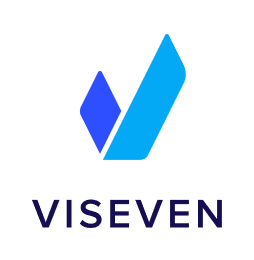
The course on Blended learning: advantages, disadvantages and examples of application
In today’s rapidly evolving world, blended learning is becoming an increasingly popular approach to employee training.
The main advantage of this method is that it combines the best aspects of traditional learning with the innovative capabilities of online technologies. This allows you to combine the advantages of both formats and create a more effective and flexible learning environment.
In this article, we review the main elements and methods of blended learning, their advantages and disadvantages.
The concept of blended learning
Blended learning is an approach that combines traditional learning methods with the use of modern technologies and interactive tools.
This format allows employees to study materials offline and online. The main idea behind blended learning is to effectively combine the benefits of traditional offline learning with the convenience and flexibility of online learning.
Blended learning: how to use it
1. Webinars
Using webinars in combination with traditional training has many advantages that make the learning process more effective and interactive. The main ones are:
- flexibility and accessibility. Webinars can be conducted online, allowing employees to learn regardless of location.
- interactivity. Webinars allow employees to interact with a trainer in real time. They can ask questions, participate in discussions and interactive exercises.
- recording and re-viewing. Webinars can be recorded. It allows employees to review the material at their convenience.
- improving traditional education. The use of webinars complements traditional training methods and makes them more effective. It allows participants to be more involved in the learning process.
This method has its drawbacks as well:
- lack of personal contact. Webinars lack direct personal contact with the trainer, which can reduce the level of engagement and interaction, especially for some types of learning.
- platform limitations. Depending on the technical characteristics of the webinar platform, interactivity and collaboration may be limited.
- time limitations. Webinars usually have fixed times, which may not be suitable for all participants from different time zones or busy schedules.
To successfully implement webinars, you need to take into account several important aspects: prepare the necessary equipment (webcam, microphone, stable Internet connection) and a webinar platform.
LMS Collaborator features integration with some of the most popular webinar services: Zoom, BIgBlueButton, MS Teams, Digital Samba, Vatra. You can choose a platform that suits your needs with the necessary functions. Such as Q&A sessions, recording, screen demos, chat, surveys, etc.

We have described the features of each platform in more detail in the following article: Online meeting platforms and their integration into corporate learning
2. E-courses
E-learning courses provide an efficient, flexible, and interactive way of learning that complements traditional methods and allows companies to create effective training programs for their employees.
Переваги використання електронних курсів:
- flexibility. E-learning courses allow employees to study at their own pace and time, from any location with Internet access.
- individualization. E-learning courses allow you to create individualized training plans based on the needs and level of knowledge of each employee.
- interaction and engagement. The use of various multimedia materials in e-learning courses helps to increase engagement and ensure effective interaction with the learning materials.
- progress tracking. E-learning systems allow tracking the progress of employees and obtaining data on training success. It enables timely detection of problems and adjustments to the learning process.
Disadvantages of this format:
- lack of personal contact. E-courses are not able to provide the level of interaction with the instructor that can be obtained in traditional offline learning.
- the need for the Internet. Internet access is required to complete e-courses.
- lack of control. In blended learning, it’s important to ensure that employees are diligent in their learning and on task. Lack of supervision can lead to a lack of discipline and accountability.
Advice from the experts:
E-courses are a powerful tool in corporate learning. To use them effectively, it is important to provide the necessary technical support and resources. To increase engagement, use different types and formats of material delivery, including microlearning. Create e-learning courses that will interest employees and support their development. Use real-life scenarios to demonstrate the practicality of the training material. Combine eLearning courses with traditional teaching methods such as lectures, seminars, role-playing games, etc. Blended learning allows for more opportunities for interaction and communication.

Create e-courses and organize online learning for your employees using LMS Collaborator tools. Submit an application and get a free demo access to the LMS Collaborator learning portal for a month.
3. Offline seminars and trainings
Offline seminars facilitate interaction and create a context for learning. While trainings provide hands-on experience and support for skill development. Combining these approaches helps to improve learning, facilitates more effective learning and application of the acquired knowledge in the workplace.
In-person seminars and trainings have their advantages and disadvantages. The main advantages of this method of training are:
- experience exchange. The offline format ensures active interaction between participants, which contributes to a deeper understanding of the material and exchange of experience.
- immediate feedback. Participants receive instant feedback from instructors or tutors.
- practical skills application. Real-life scenarios and role-playing games during offline trainings allow you to practice practical skills in real-life conditions.
Disadvantages of offline seminars and trainings:
- increased costs. Organizing offline events requires significant expenses for renting premises, travel, materials, and trainers.
- delays in workі. Conducting offline events can lead to the suspension of work processes for a certain period of time, which can affect the productivity and efficiency of employees.
- organizational challenges. Coordination and planning of offline events can be more difficult, especially if participants have different schedules and workplaces.
- the possibility of information loss. Information provided during offline seminars may be lost or inaccessible to participants after the event, especially if there is no recording or materials.
Considering these drawbacks, we recommend that you carefully plan and balance the offline and online components of blended corporate learning. It will ensure optimal conditions for employees to learn and develop their skills. It is better to organize offline sessions after an online course or webinar. This way, employees can discuss complex aspects of the material and solve practical problems under the guidance of instructors or trainers. The LMS Collaborator “Meetups” tool will help you register participants and record the results of the training.

What are the advantages of Blended learning?
- Flexibility and individualization.
Blended learning allows adaptation of the pace and approach to learning to the individual needs of each employee. - Improved material learning.
The combination of offline and online formats contributes to better learning and memorization of information. Interacting with materials in different formats (text, video, interactive tasks) ensures a more effective perception of the learning material. - Saving time and resources.
Using the online format allows employees to study at a time and place convenient for them. It allows for more efficient use of time and company resources. - Possibility of learning at a workplace.
Blended learning allows employees to learn directly on the job while performing work tasks. This helps them to apply new knowledge in a practical way right away. - Encouraging independence and responsibility.
Online learning helps employees develop independence and responsibility. They become active participants in their learning. - Analyzing and reporting.
Distance learning systems allow you to collect analytical data on employee progress and performance. Administrators can analyze the data and receive reports, which allows them to make the right adjustments and improve the learning process in the future.
Conclusion
The successful combination of online and offline elements of blended learning provides a more flexible and interactive approach to employee training. It promotes better knowledge assimilation and skill development.
The main tools of blended learning are:
- webinars,
- e-courses,
- in-person seminars and trainings.
Each of these has its own advantages and limitations, so it is essential to be able to combine them correctly and in a balanced manner, adapting them to the needs of the company and employees.
Implement blended learning and experience the benefits of the online format with the LMS Collaborator learning portal.



































